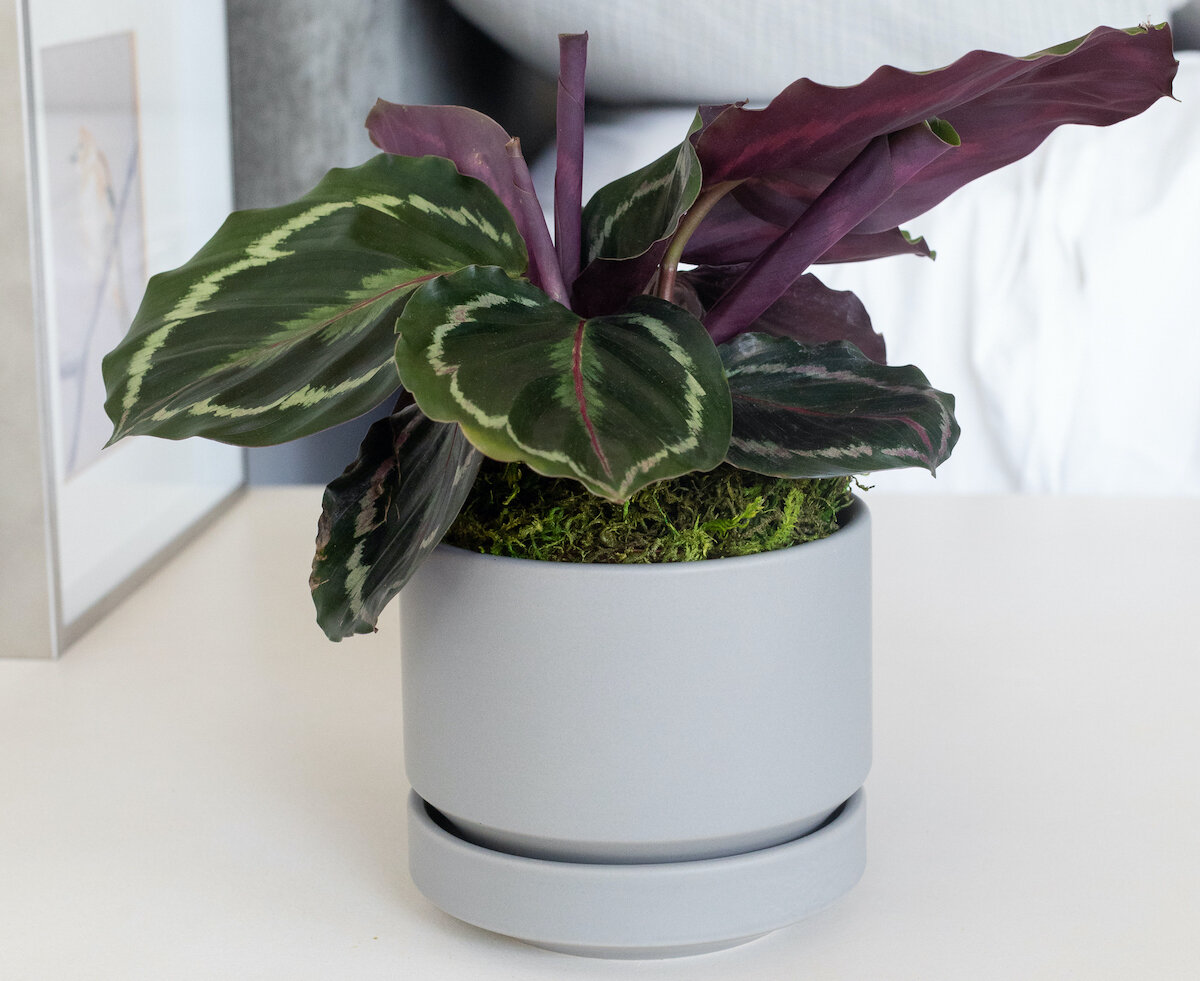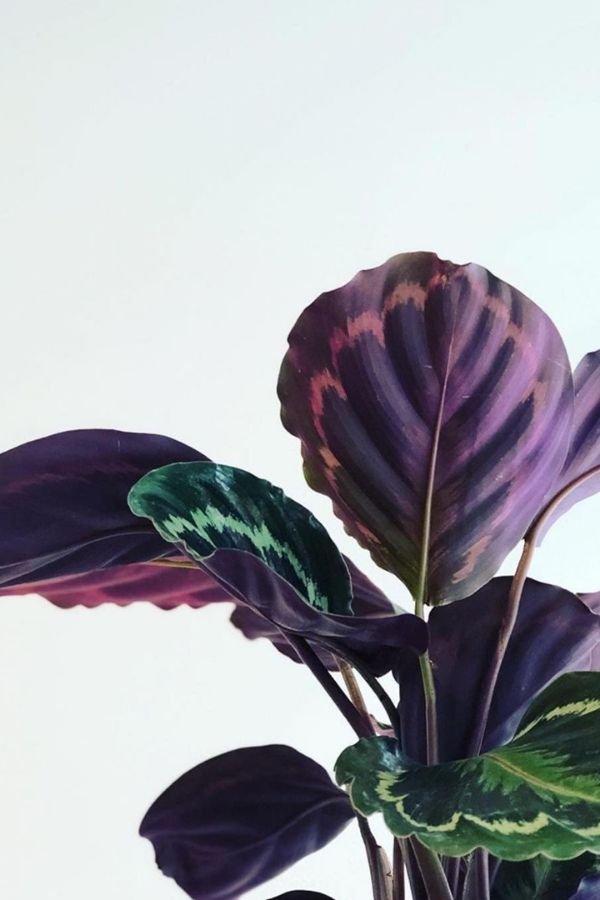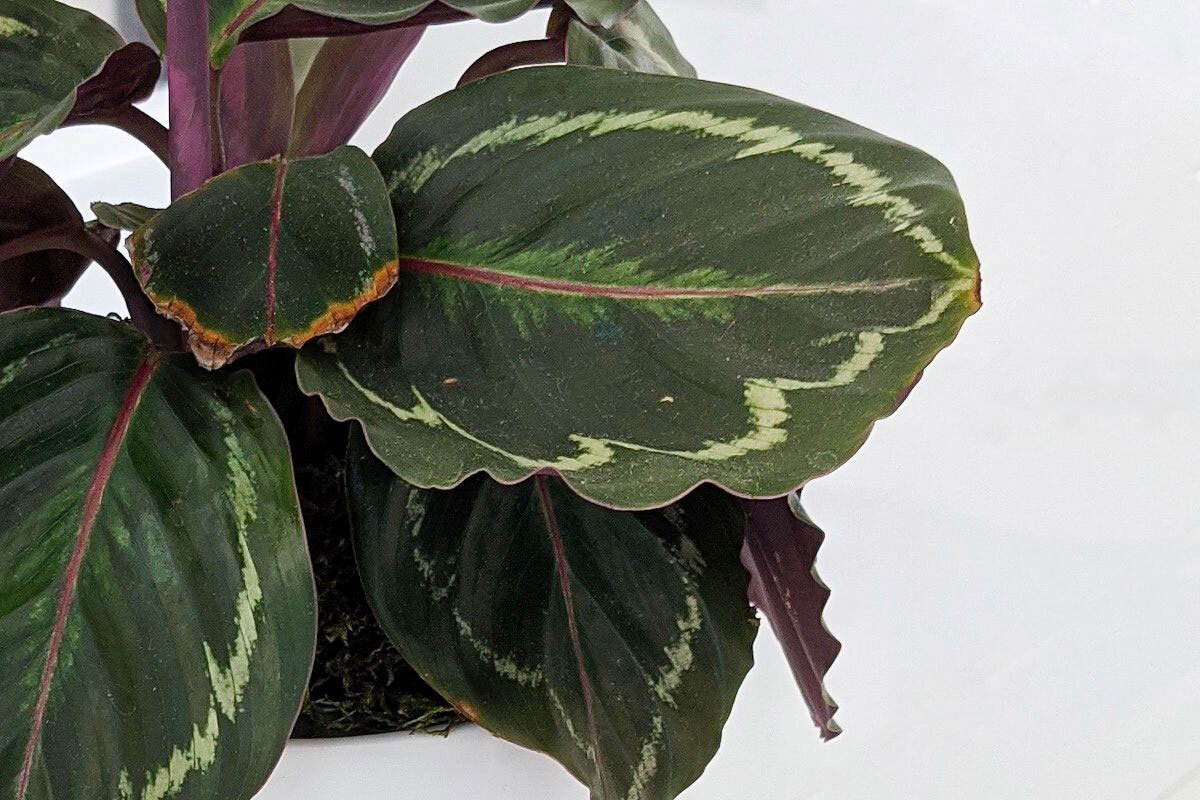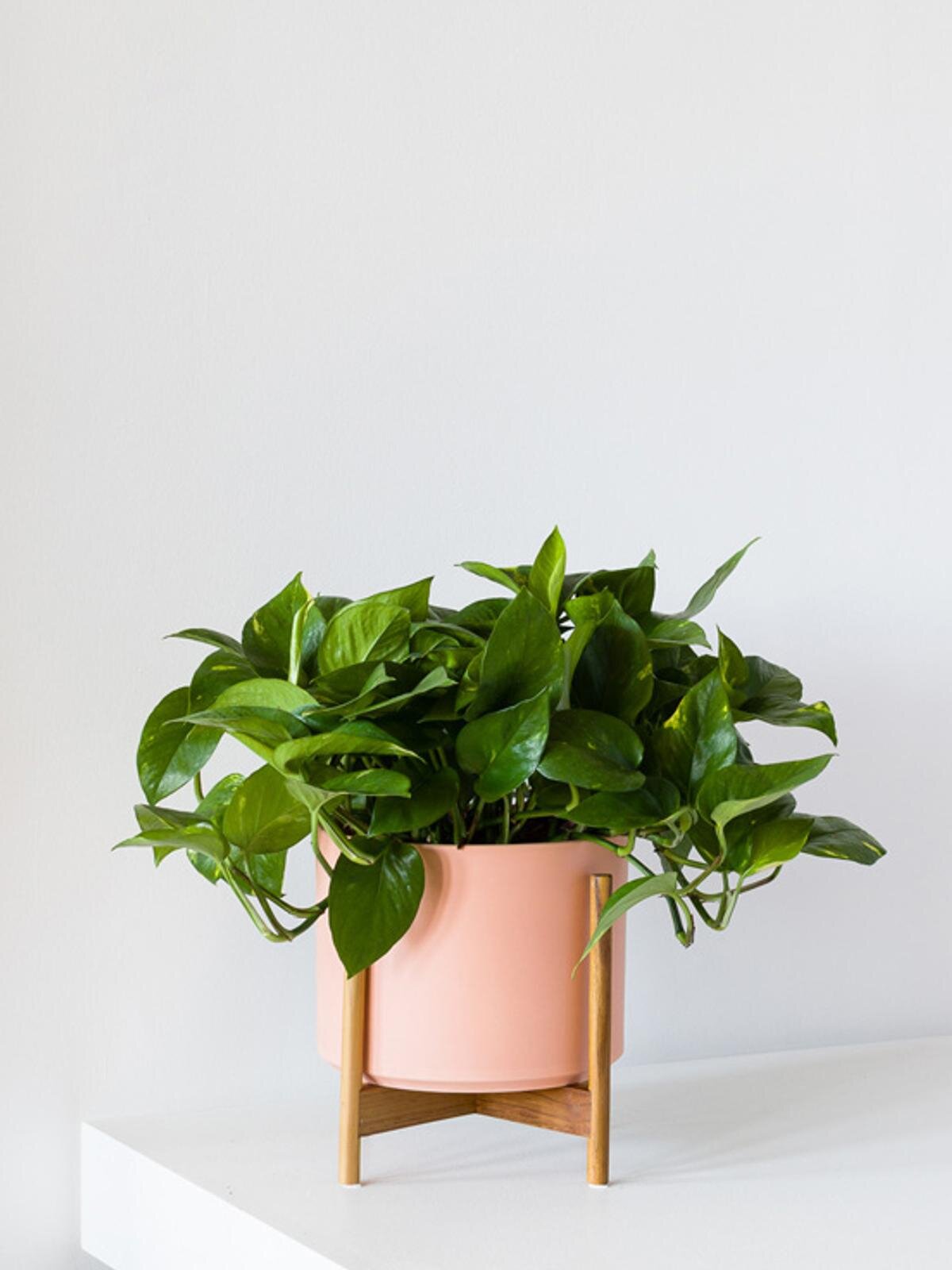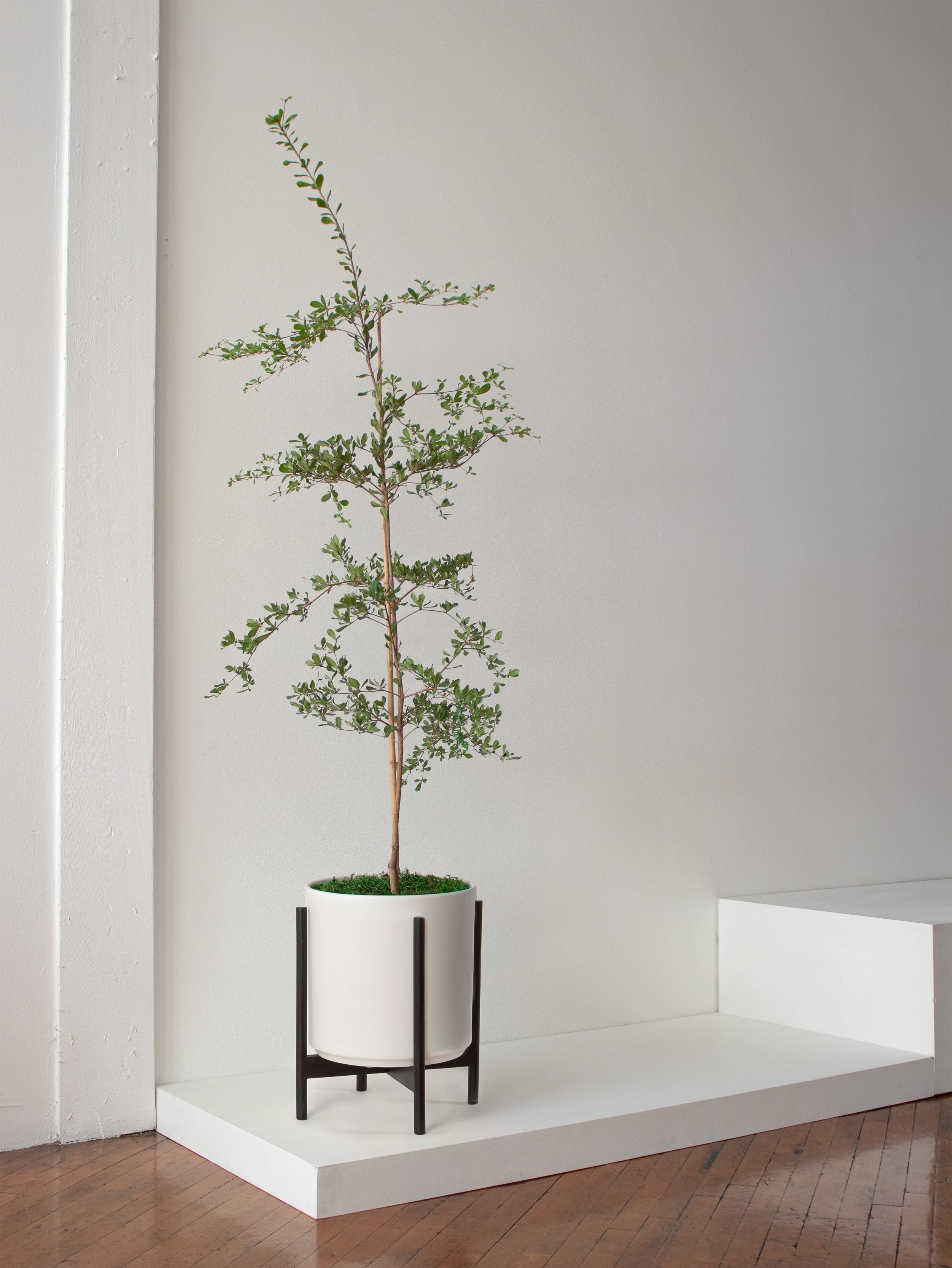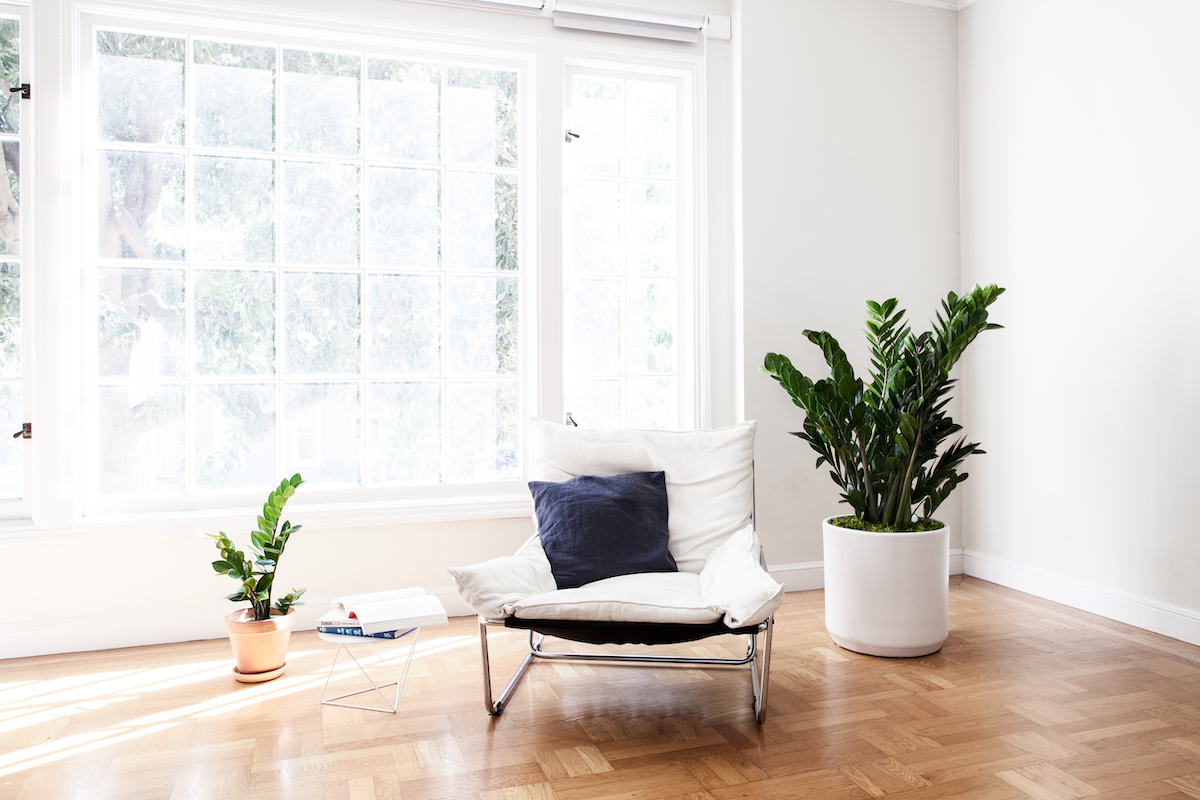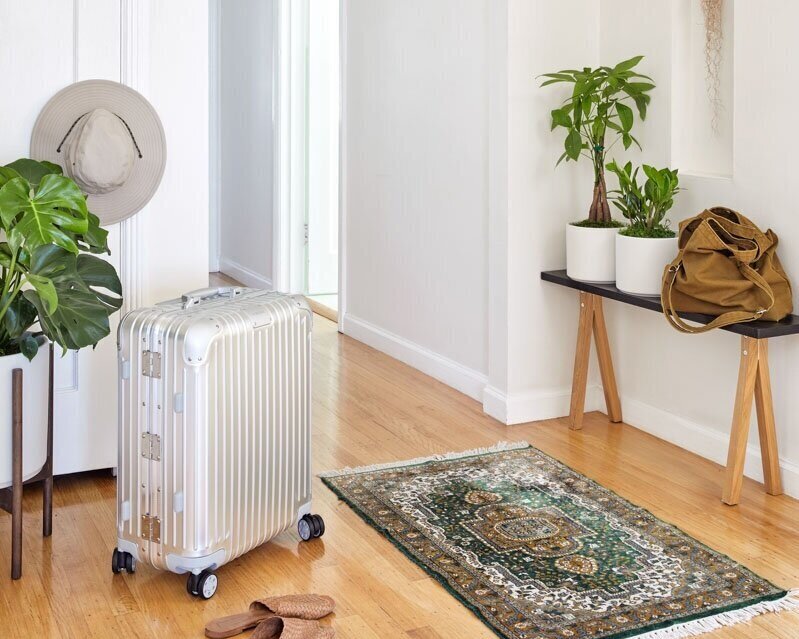The Calandiva
AKA Snowdrop Calandiva
AKA Florist’s Kalanchoe
AKA Flaming Katy
With dainty clusters of rose-like flowers, the Calandiva is a popular cultivar (variety) of the Kalanchoe succulent family. Though this plant’s buds typically appear in the fall, followed by flowers in late winter and spring, with a bit of patience it can be “tricked” to blooming at its owner’s desire. Read on for simple tips on how to care for the beautiful Calandiva.
How much light does the Calandiva need?
As a succulent, this plant does best with plenty of bright indirect light. Avoid harsh direct sunlight. In the winter or once their flowers have bloomed, they can withstand medium levels of light.
How to water a Calandiva
Water your plant sparingly and keep in mind that it is best to err on the side of under-watering. Water the base of the soil once every one to two weeks, or when it feels completely dry to the touch. You may water a bit more when the plant is in bloom.
Are Calandivas fast growers?
The Calandiva is a relatively slow grower that will reach approximately 12-18” tall. Fertilize your plant once a month in the spring and summer.
Common problems with the Calandiva
Yellow or brown edges
If you see yellow or brown edges on just one or two leaves of your Calandiva, odds are it’s just those leaves’ time to go (nothing is wrong with your plant!). Simply remove them at the base of the stem so the plant does not waste any more energy on these leaves. However, if you see yellow or brown edges all over the plant, it’s most likely due to either overwatering or not enough light, or a combination of both.
No flowers
The Calandivas’ flowers have seasons: during the fall as the days get shorter, the plant prepares to bloom, and will show flowers in the winter and spring. As such, short days and long nights are what make the Calandiva naturally bloom. While this may happen naturally indoors, it’s also possible it won’t. That’s because your plant may be receiving too much artificial light once the sun goes down (yes, plants notice artificial light!). If possible, place your Calandiva in an area that is dark for at least 14 hours a day. This may require moving it in the early evening as you begin to turn lights on in your home, or placing it in an area of your home that you do not use at night. Once your plant’s buds have formed, the plant can remain anywhere in bright indirect light.
Once the buds open up, flowers will last generally around six weeks. Read more detailed, step-by-step instructions on how to make your Calandiva flower below.
How to maintain a beautiful and healthy Calandiva
Take care of your Calandiva and it will take care of you! Below are simple tips to continue caring for and growing your plant over time.
Pinching
Trim or pinch off (with your fingers) spent flowers about six weeks after they’ve bloomed, or once they shown signs of withering, and cut back the tall stem that rises from the flowers after this period.
Pruning
Minor pruning goes a long way with the Calandiva. After the flowering period, cut back the taller leaves of the plant, cutting below the second or third new leaf of each stem. Take a step back to take note of the plant’s overall shape, and remove leaves as necessary to maintain the full and bushy appearance.
How to grow and repot the Calandiva
Growing - Calandivas are slow growers. During spring and summer, fertilize once a month. As detailed above, minor pruning and pinching will help maintain its full shape and appearance.
Repotting - Léon & George Calandivas come in 6” grow pots and only need to be repotted every few years and only if the plant is unhappy (i.e. has been overwatered) or to refresh the soil and give it new nutrients. If you’d like your plant to grow larger, find a new grow pot that is 2” larger than its current pot. If you’re happy with the current size, you can reuse the same pot and simply change the soil. Make sure to use well-draining or succulent soil for the Calandiva.
Getting your hands dirty with or without a yard - spread out newspaper on the floor, remove the plant from the pot and shake off as much of the old soil as possible so that you have clean roots. At the bottom of the grow pot, and a layer of soil, then place the plant in the center of the pot and cover with new soil. Pat down firmly and water thoroughly. Place the plant in an area with bright indirect light. Your plant will take 2-4 weeks to settle into its new home.
How to promote flowering on your Calandiva
As mentioned above, Calandivas flower typically in the winter and spring, encouraged by the short days and long nights that begin in the fall. In order to ensure your plant flowers to its full potential each year, you may need to take a few extra steps to meet its needs:
Come fall, place your plant in an area that is dark at least 14 hours a day (no artificial light). This could be a room in your home that you do not use at night, or if you must, move the plant to a closet in the late afternoon as you begin to turn lights on in your home.
Make sure your plant receives “long nights” (~14 hours) for about six weeks. Water sparingly or less than you normally would during this time.
After about six weeks, you should start to see buds form. At this time, you can place your plant anywhere you like so that it receives bright indirect light. Your flowers should bloom shortly thereafter!
How to propagate the Calandiva
There are a few different ways to propagate the Calandiva. You can either divide your Calandiva, or, more easily and without making a mess, take cuttings from your plant:
Select a leaf to cut or snap off - Ideally you can use some of the cuttings after pruning! Make sure the cutting has at least two leaves, and do not to take any stems that are flowering.
Cut it off - Using a clean blade, cut the stem off, or snap it off with your fingers.
Let it heal - Let the leaf dry out for a few days. It should “heal”, forming a callus over where it was cut off.
Place in soil- Put the calloused end into moist, well-draining soil (succulent mix). Keep the soil just damp to the touch until the plant is rooted, usually within two to three weeks.
1 TO 1 VIDEO CALL WITH AN EXPERT
Yellow leaves? Worried about watering or struggling with incorrect lighting? Book a call and get truly personalized support for all your plant-related needs.



